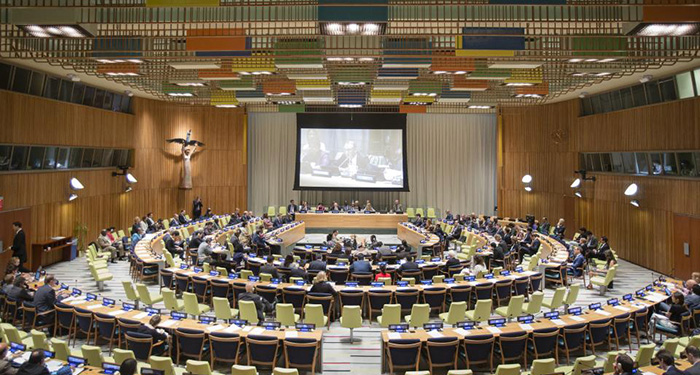سیرت النبیﷺ کی اطلاقی جہتیں: قیامِ امن، سماجی تعمیر نو اور مفاہمت
Applied Dimensions Of The Seerah Of Prophet Hazrat Mohammad (Peace Be Upon Him): Peace Building, Social Reconstruction And Reconciliation
Keywords:
Seerat-un-Nabi, Peace, Social Reconstruction, Reconciliation, Prophetic Model, Justice, Human Rights, Conflict ResolutionAbstract
Before the advent of the Holy Prophet Muhammad (PBUH), the world was engulfed in the darkness of ignorance, oppression, and social disintegration. His blessed arrival illuminated the universe, introducing a comprehensive system based on divine guidance and prophetic wisdom. The Prophet Muhammad (PBUH) not only brought a spiritual revolution but also presented a complete framework for individual and collective reform. This paper delves into the practical dimensions of Seerat-un-Nabi (PBUH), particularly emphasizing his role in the establishment of peace, social reconstruction, and reconciliation. His mission embodied mercy, justice, and human dignity, transforming a tribal and conflict-ridden society into a model of ethical governance and peaceful coexistence. The Prophet (PBUH) laid down principles of mutual respect, tolerance, and fulfillment of rights, setting the groundwork for a just and peaceful society. His conflict resolution strategies, such as the Charter of Madinah and the Treaty of Hudaybiyyah, reflect a deep commitment to dialogue, coexistence, and pluralism. Under his leadership, the social order became so secure that a woman could travel alone without fear of harm—an extraordinary testament to the depth of moral reform. In today’s world, which is marked by increasing polarization, violence, and injustice, the Seerah of the Prophet (PBUH) serves as an enduring source of practical guidance. This paper argues that applying the Prophet’s (PBUH) principles can help in fostering global peace, rebuilding fractured societies, and promoting reconciliation among divided communities.
Downloads
References
1. غلام احمد، امن عالم سیرتِ طیبہﷺ کی روشنی میں،) لاہور: اقبال پبلیشنگ کمپنی، 1999ء(، ص 36
2. القرآن: 22/39
3. القرآن: 67/8
4. منیر احمد، پیغمبر امن محمد رسول اللہ، )سیالکوٹ: مکتبہ حدیث، 2006ء(،ص38
5. غلام احمد، امن عالم سیرتِ طیبہﷺ کی روشنی میں،ص 112
6. القرآن: 22/39
7. محمد سعد اللہ، حضور نبی اکرم بطور پیغمبر امن و سلامتی،( لاہور:منہاج بکس لائبریری، 2011ء)،ص31 www.minhajbooks.com
8. القرآن: 15/20
9. ڈاکٹر عبدالغفار، پائیدار سماجی ترقی، (اوکاڑہ: شعبہ علوم اسلامیہ, 2021ء)، ص 37
10. القرآن: 61/9
11. دہلوی، شاہ ولی اللہ ، احمد بن عبد الرحیم، ازالۃ الخفاء عن خلافة الخلفاء، (کراچی:میر محمد کتب خانہ ، س ن)، ج1،ص27
12. القرآن: 13/49
13. ڈاکٹر عبدالغفار، پائیدار سماجی ترقی، (اوکاڑہ: شعبہ علوم اسلامیہ 2021ء)،ص112
14. القرآن: 1/48
15. https://www.balaghulquran.com/quranmozooati.php?optsrch_ch=33&optsrch_tp=436&optsrch_st=519
16. محمد بن اسماعیل بخاری، الجامع الصحیح،كِتَابُ المَغَازِي ،بَابُ غَزْوَةِ ذَاتِ الرِّقَاعِ، رقم: 4136
17. محمد بن اسماعیل، الجامع الصحیح، كِتَاب الْأَدَبِ، بَابُ إِثْمِ الْقَاطِعِ، رقم: 5984
18. مسلم بن عقبہ حجاج، صحیح مسلم، بیروت دارالکتاب، کِتابُ الِایماَن، باب الدَّلِيلِ عَلَى أَنَّ مِنْ خِصَالِ الإِيمَانِ أَنْ يُحِبَّ لأَخِيهِ الْمُسْلِمِ مَا يُحِبُّ لِنَفْسِهِ مِنَ الْخَيْرِ، رقم:

Downloads
Published
Issue
Section
License
Copyright (c) 2024 Ayesha Imran, Sabiha Ashraf (Author)

This work is licensed under a Creative Commons Attribution-NonCommercial 4.0 International License.




